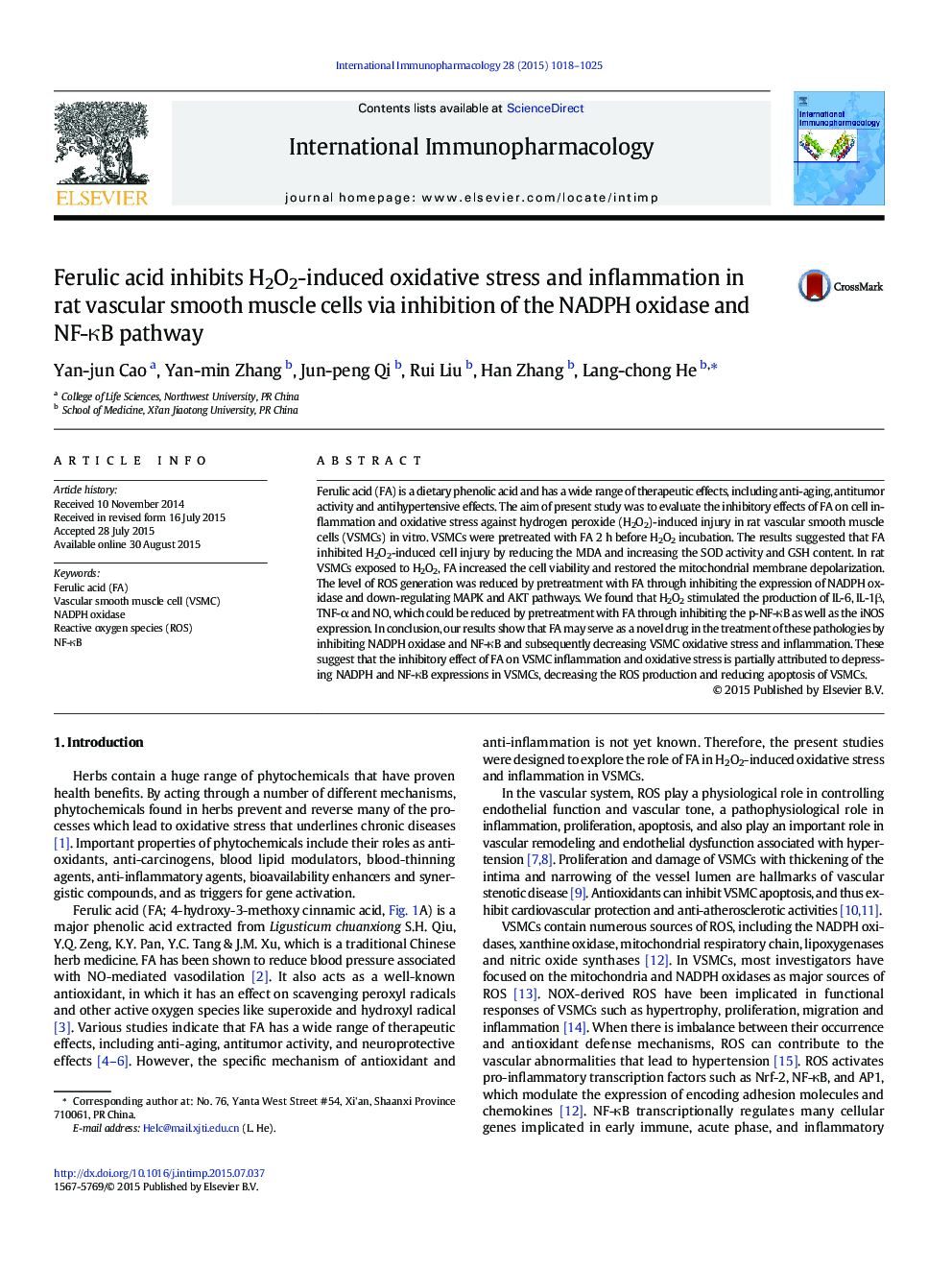| کد مقاله | کد نشریه | سال انتشار | مقاله انگلیسی | نسخه تمام متن |
|---|---|---|---|---|
| 2540397 | 1122591 | 2015 | 8 صفحه PDF | دانلود رایگان |

• FA inhibited H2O2-induced cell injury by reducing the MDA, increasing the SOD activity and GSH content.
• FA increased the cell viability and restored the mitochondrial membrane depolarization.
• The level of ROS generation was reduced by pretreatment with FA through NADPH oxidase, MAPK and AKT pathway.
• FA reduced H2O2-stimulated production of IL-6, IL-1β, TNF-α and NO through inhibiting the p-NF-κB and iNOS expression.
Ferulic acid (FA) is a dietary phenolic acid and has a wide range of therapeutic effects, including anti-aging, antitumor activity and antihypertensive effects. The aim of present study was to evaluate the inhibitory effects of FA on cell inflammation and oxidative stress against hydrogen peroxide (H2O2)-induced injury in rat vascular smooth muscle cells (VSMCs) in vitro. VSMCs were pretreated with FA 2 h before H2O2 incubation. The results suggested that FA inhibited H2O2-induced cell injury by reducing the MDA and increasing the SOD activity and GSH content. In rat VSMCs exposed to H2O2, FA increased the cell viability and restored the mitochondrial membrane depolarization. The level of ROS generation was reduced by pretreatment with FA through inhibiting the expression of NADPH oxidase and down-regulating MAPK and AKT pathways. We found that H2O2 stimulated the production of IL-6, IL-1β, TNF-α and NO, which could be reduced by pretreatment with FA through inhibiting the p-NF-κB as well as the iNOS expression. In conclusion, our results show that FA may serve as a novel drug in the treatment of these pathologies by inhibiting NADPH oxidase and NF-κB and subsequently decreasing VSMC oxidative stress and inflammation. These suggest that the inhibitory effect of FA on VSMC inflammation and oxidative stress is partially attributed to depressing NADPH and NF-κB expressions in VSMCs, decreasing the ROS production and reducing apoptosis of VSMCs.
Figure optionsDownload as PowerPoint slide
Journal: International Immunopharmacology - Volume 28, Issue 2, October 2015, Pages 1018–1025